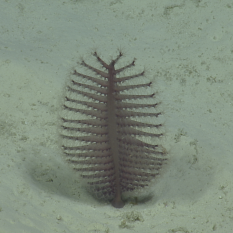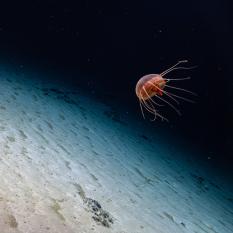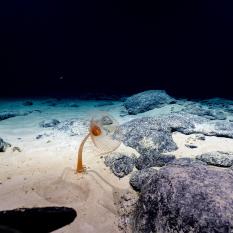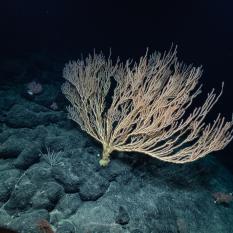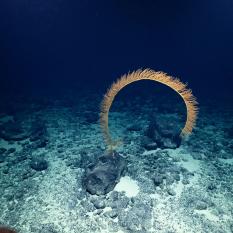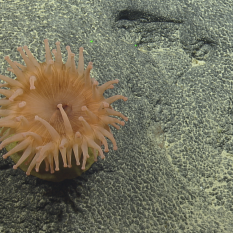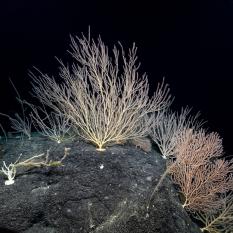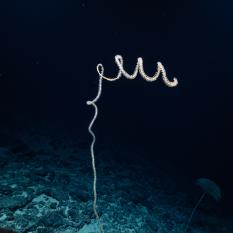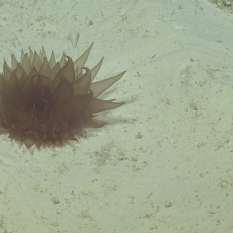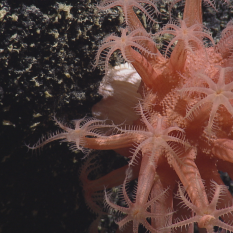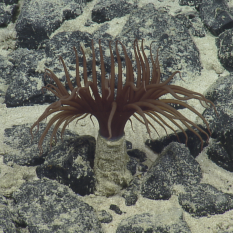Cnidarians Galore at the Depths of the Ocean Floor
Cnidarians are a phylum of animals that contain corals, jellyfish, sea anemones, sea pens, and hydrozoans. During the Deep Seamount Biodiversity of Johnston Atoll expedition, a variety of stunning cnidarian species were found. This animal group is divided into two groups polypoid and medusoid. Polypoid cnidarians have tentacles and a mouth that face up and a base that attaches to a substrate or colony of other animals. Medusoid cnidarians have a bell on their top and the tentacles and mouth hang down. Despite their diversity, all cnidarians have stinging cells called cnidocytes, which contain barb-like nematocysts that help in defense and capturing prey.
The following photos were captured by the ROV Herculesʻ cameras across fifteen dives investigating the geological and biological diversity of the Johnston Atoll Unit of the Pacific Remote Islands Marine National Monument (PRIMNM).
Album created by Science Communication Fellow Onyeweenu Ogene.

Deep Sea Biodiversity & Ancient Volcanoes near Johnston Atoll
Johnston Atoll, one of the most isolated atolls in the world, is located in the central Pacific Ocean, between the Hawaiian Islands, the Line Islands, and the nation of Kiribati. Around this atoll, the Pacific Remote Island Marine National Monument (PRIMNM) was expanded in 2014 to protect the full 200 nautical mile perimeter of the exclusive economic zone (EEZ) encompassing many unexplored seafloor features.


